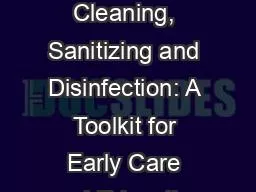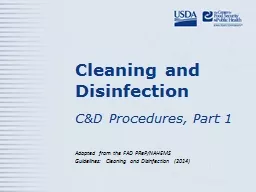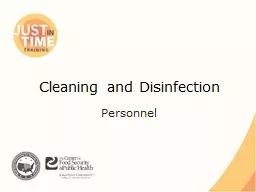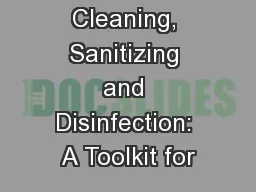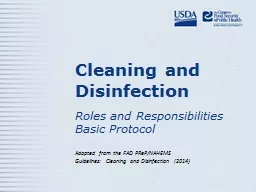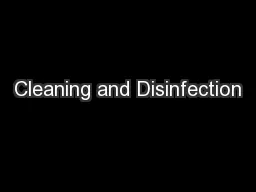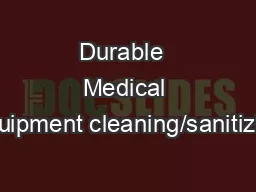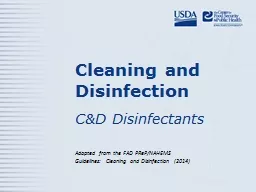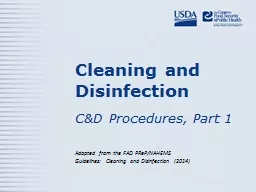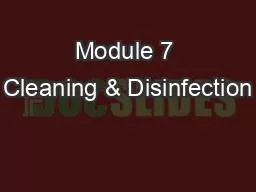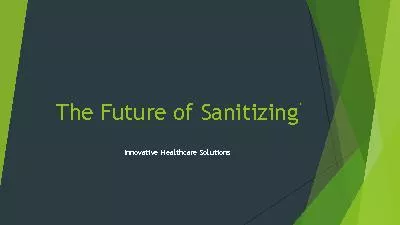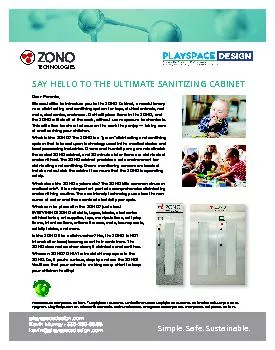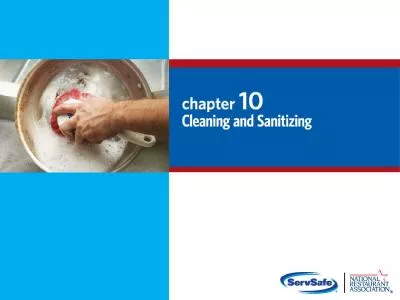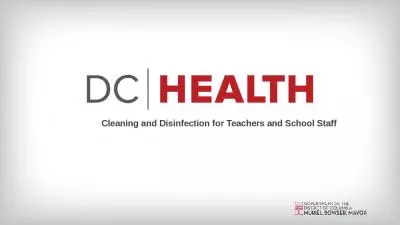PPT-Green Cleaning, Sanitizing and Disinfection: A Toolkit for Early Care and Education
Author : webraph | Published Date : 2020-07-02
This Green Cleaning Sanitizing and Disinfecting Toolkit for Early Care and Education was developed by a team of public health professionals health educators nurses
Presentation Embed Code
Download Presentation
Download Presentation The PPT/PDF document "Green Cleaning, Sanitizing and Disinfect..." is the property of its rightful owner. Permission is granted to download and print the materials on this website for personal, non-commercial use only, and to display it on your personal computer provided you do not modify the materials and that you retain all copyright notices contained in the materials. By downloading content from our website, you accept the terms of this agreement.
Green Cleaning, Sanitizing and Disinfection: A Toolkit for Early Care and Education: Transcript
Download Rules Of Document
"Green Cleaning, Sanitizing and Disinfection: A Toolkit for Early Care and Education"The content belongs to its owner. You may download and print it for personal use, without modification, and keep all copyright notices. By downloading, you agree to these terms.
Related Documents

